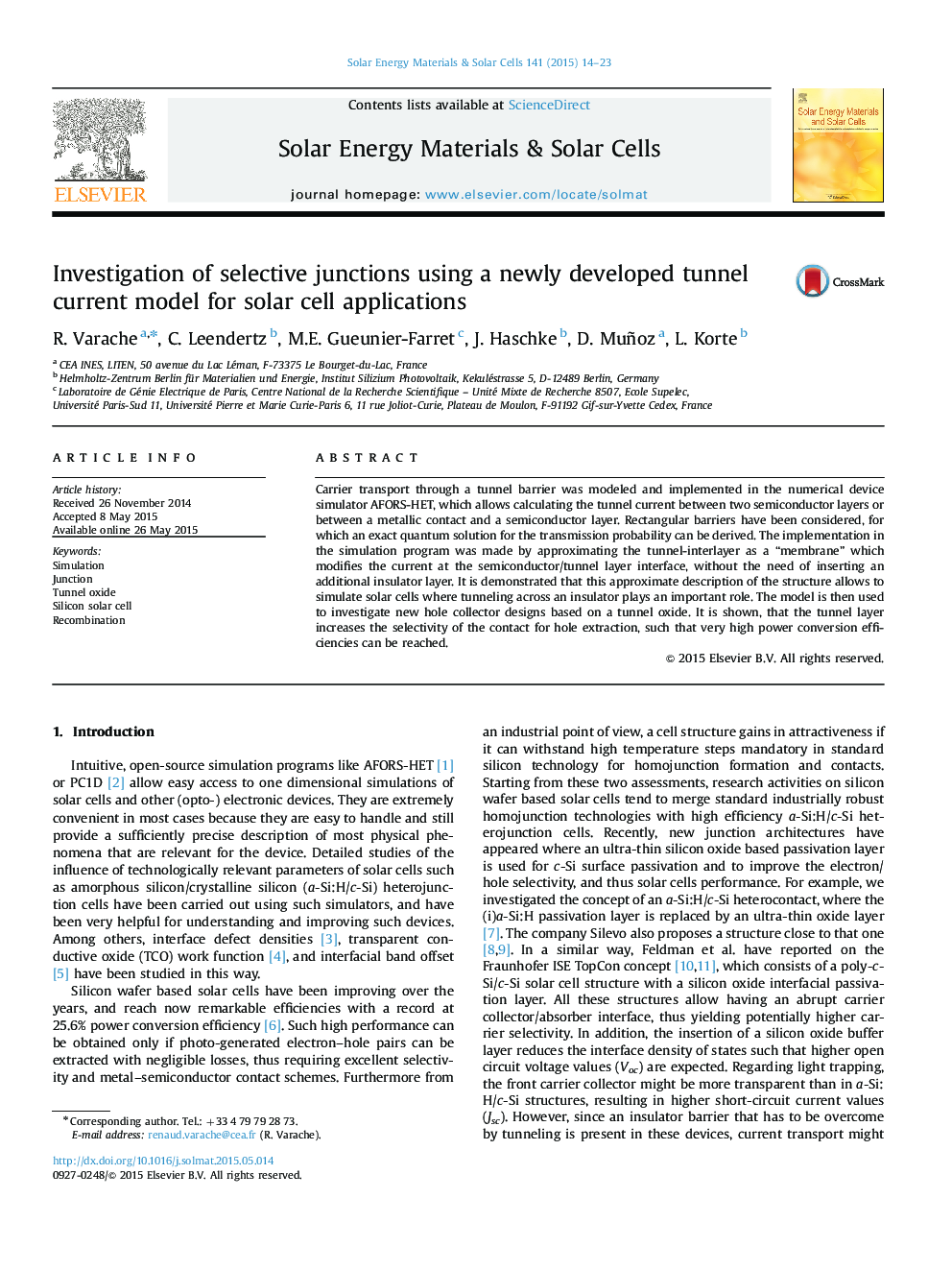| Article ID | Journal | Published Year | Pages | File Type |
|---|---|---|---|---|
| 77720 | Solar Energy Materials and Solar Cells | 2015 | 10 Pages |
•We develop a tunnel current model and implement it in the program AFORS-HET.•We comment on the validity of our tunnel current model.•We simulate silicon based solar cells with a tunnel barrier at the p–n junction.•We analyze internal charge currents and recombination to understand the device.•A tunnel layer is found to increase the selectivity of the p–n contact.
Carrier transport through a tunnel barrier was modeled and implemented in the numerical device simulator AFORS-HET, which allows calculating the tunnel current between two semiconductor layers or between a metallic contact and a semiconductor layer. Rectangular barriers have been considered, for which an exact quantum solution for the transmission probability can be derived. The implementation in the simulation program was made by approximating the tunnel-interlayer as a “membrane” which modifies the current at the semiconductor/tunnel layer interface, without the need of inserting an additional insulator layer. It is demonstrated that this approximate description of the structure allows to simulate solar cells where tunneling across an insulator plays an important role. The model is then used to investigate new hole collector designs based on a tunnel oxide. It is shown, that the tunnel layer increases the selectivity of the contact for hole extraction, such that very high power conversion efficiencies can be reached.
